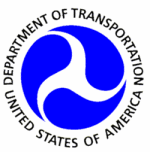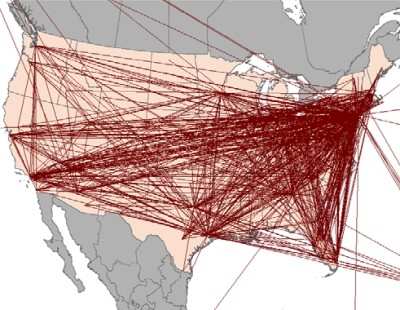Tue, Nov 09, 2010
DOT Inspector General Says A Third Of New York Flights Delayed
Or Cancelled
 The Department of Transportation Office of the Inspector
General has found that as many as one third of flights to and from
the New York region's three primary airports were cancelled or
delayed in 2009, which is still an improvement over the 40 percent
delay or cancellation rate it found in 2007.
The Department of Transportation Office of the Inspector
General has found that as many as one third of flights to and from
the New York region's three primary airports were cancelled or
delayed in 2009, which is still an improvement over the 40 percent
delay or cancellation rate it found in 2007.
In a report to the FAA, the OIG found that there were three
primary reasons for the cancellations and delays: crowded airspace
due to the close proximity and high volume of flight operations of
the three main New York airports; airport capacity constraints; and
continued growth in air traffic during the last 10 years, in part
due to the phase-out of flight limits (caps) from 2000 to 2007.
In a report summary on the DOT website, the OIG said the
re-establishment of those caps at Kennedy in 2008, along with the
implementation of caps for the first time at Newark that same year,
had little effect on overall congestion. " While there is
substantial agreement that New York delays have a nationwide
"ripple effect," the extent and nature of their impact are largely
unknown. FAA's efforts to measure this effect are in the
developmental stage and require additional work to provide a full
understanding of delay propagation," the report said.
The DOT OIG says it made four recommendations to FAA aimed at
reexamining its flight caps, enhancing existing flight data, and
developing a viable methodology for understanding delay propagation
effects. Specifically, the OIG recommended that the FAA:
- Reexamine flight caps at Kennedy, LaGuardia, and Newark
airports, basing the caps on more realistic airport operating
conditions, air carrier scheduling practices, and a goal towards
reducing delays to an acceptable rate. In considering an acceptable
rate and length of delay, FAA should incorporate the views of air
carriers, the airport operator, and passenger groups as well as
lessons learned from other slot-controlled airports.
- Establish a working group of air carriers, academia, and other
aviation research organizations to enhance the understanding of
delay propagation (e.g., develop viable analytic methodologies,
useful database structures, and common terms of reference).
- Enhance existing flight delay data by obtaining aircraft tail
numbers for domestic and international flight operations of U.S.
air carriers in order to better study and manage the propagation
effect of flight delays.
- Complete development of a viable methodology for measuring the
dynamics of flight delays at New York (as well as other U.S.
airports) and their propagation nationwide. This methodology should
include the ability to measure both the amount of delay time being
propagated and the number of subsequent flights being
impacted.

Analysis Of New York Flights Prepared By BTS,
DOT
The Inspector General says that the FAA fully concurred with one
recommendation and partially concurred with three. They have
requested that FAA provide a new written response addressing
specific issues with these three recommendations within 30
days.
More News
Aero Linx: International Federation of Airworthiness (IFA) We aim to be the most internationally respected independent authority on the subject of Airworthiness. IFA uniquely combi>[...]
Ultrahigh Frequency (UHF) The frequency band between 300 and 3,000 MHz. The bank of radio frequencies used for military air/ground voice communications. In some instances this may >[...]
A Few Questions AND Answers To Help You Get MORE Out of ANN! 1) I forgot my password. How do I find it? 1) Easy... click here and give us your e-mail address--we'll send it to you >[...]
From 2019 (YouTube Edition): Learning To Paint Without Getting Any On Your Hands PPG's Aerospace Coatings Academy is a tool designed to teach everything one needs to know about all>[...]
Also: Sustainable Aircraft Test Put Aside, More Falcon 9 Ops, Wyoming ANG Rescue, Oreo Cookie Into Orbit Joby Aviation has reason to celebrate, recently completing its first full t>[...]
 ANN's Daily Aero-Linx (05.06.25)
ANN's Daily Aero-Linx (05.06.25) ANN's Daily Aero-Term (05.06.25): Ultrahigh Frequency (UHF)
ANN's Daily Aero-Term (05.06.25): Ultrahigh Frequency (UHF) ANN FAQ: Q&A 101
ANN FAQ: Q&A 101 Classic Aero-TV: Virtual Reality Painting--PPG Leverages Technology for Training
Classic Aero-TV: Virtual Reality Painting--PPG Leverages Technology for Training Airborne 05.02.25: Joby Crewed Milestone, Diamond Club, Canadian Pilot Insurance
Airborne 05.02.25: Joby Crewed Milestone, Diamond Club, Canadian Pilot Insurance




